|
|

|
Coyote Melon
January/February
Coyote Melon is one of those plants that are likely to be found growing near
springs since they need more water than is the case for many desert plants.
The Argus Wilderness contains many springs and one of the places that I've
found a large number of coyote melon plants is Water Canyon, the mouth of
which is just below Slate Range Crossing. In fact, the specimens shown in my
Coyote Melon (Plant Freak Song) video were found just a couple miles up the
canyon. BTW, the seeds of this plant may have been used as a food source by
local Native American groups.
(Click here for more info!)
|

|
Gravel Ghost
March/April
Gravel ghosts are also sometimes called parachute plants. This is because of
the configuration of the inflorescence. The white flowers form in such a way
as to suggest a parachute when they are exceptionally large and there is an
abundance of them. The rest of the plant is practically invisible and as a
result, when looked at from the right angle, the array of flowers resembles
a parachute.
(Click here for more info!)
|
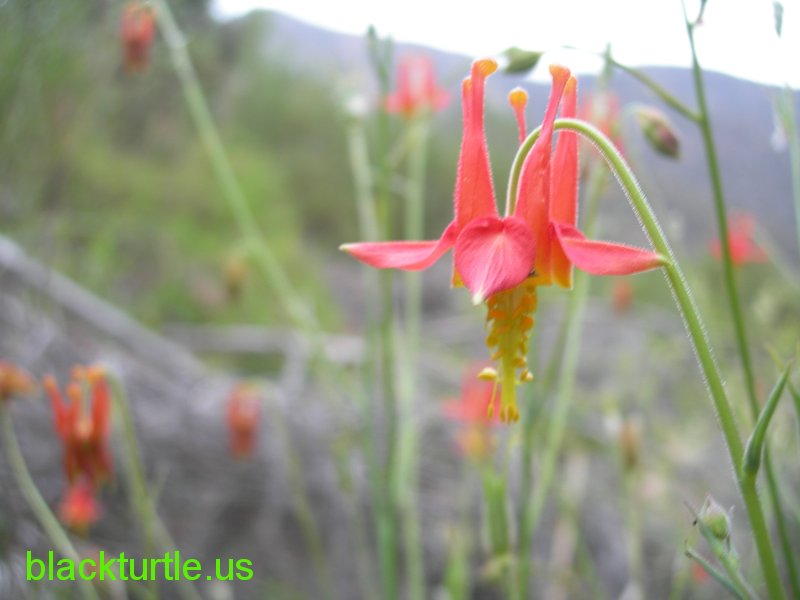
|
Columbine
May/June
Columbine is one of those plants you wouldn't expect to see in Death Valley
National Park. It grows at higher elevations and it requires lots of water.
However, Death Valley NP has a few localities that satisfy those
requirements. A colony of columbine plants grows just up from Thompson Camp,
which is located in Surprise Canyon in the Panamint Range. The colony is
near a large water cistern. DeDecker claims that columbine also grows in the
Inyo Range and the Grapevine Range.
(Click here for more info!)
|

|
Purple Owl's Clover
July/August
Purple Owl's Clover is a small plant, but upon close inspection it proves to
be a rather interesting plant. The flowers form a spikelike cluster and are
magenta to red, but yellow splotches form on some of the corollas giving the
plant, when in bloom, a rather distinctive appearance! I came across a
rather large colony of these plants between Fish and Isham Canyon in the
Slate Range last spring. Other members of the Scrophulariaceae (Figwort
Family) include Desert Paintbrush, Scarlet Monkeyflower, Lesser Mohavea,
Panamint Penstemon, and Desert Figwort.
(Click here for more info!)
|
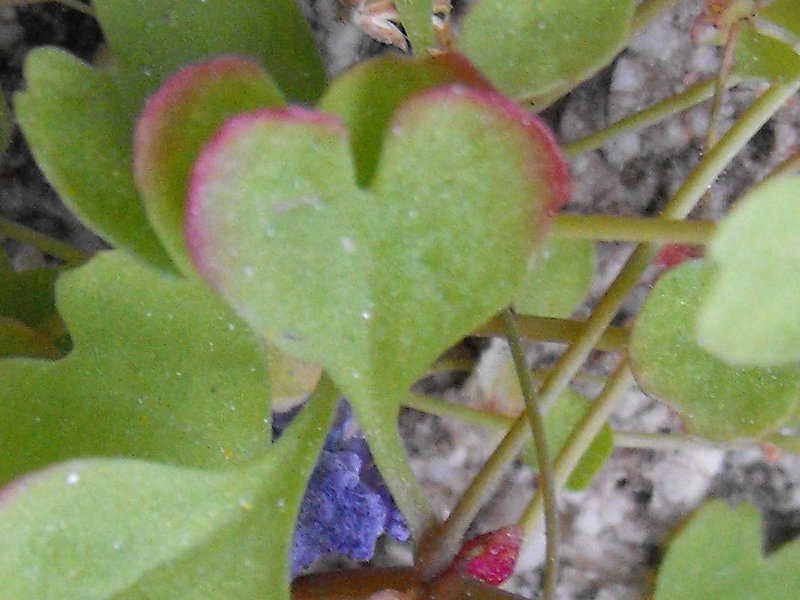
|
Valentine Plant
September/October
Pterostegia drymarioides has a few common names. Sometimes it's called
threadstem. Sometimes it is referred to as botanist's friend. However, the
most festive of its common names is valentine plant. The name is quite
appropriate, of course, because its leaves sometimes look like little hearts
and on top of that the leaves are also sometimes tinted red. The specimen
shown on this page was found in the southern part of the Argus Range just
above Pioneer Point near the county line between San Bernardino County and
Inyo County.
(Click here for more info!)
|

|
Desert Holly
November/December
With leaves of pale green, or even sometimes white, desert holly is a fairly
easy plant to identify. It is a small shrub that stays under three feet in
height. It's leaves are toothed and the most interesting thing about the
plant is the flowers that it produces. Under most conditions the plants are
dioecious, which means that a given plant normally either produces male or
female flowers. The female flowers are succulent, disk-shaped structures
while the male flowers are scale-like and an almost cranberry red in color.
(Click here for more info!)
|
|
| |
|

blackturtle.us
PLANT
BLOG
BLOG INDEX
ASSOCIATED SITES:
Trona News
Rusky Ed
Any Place Education
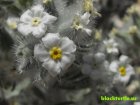



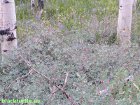

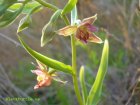

|

















